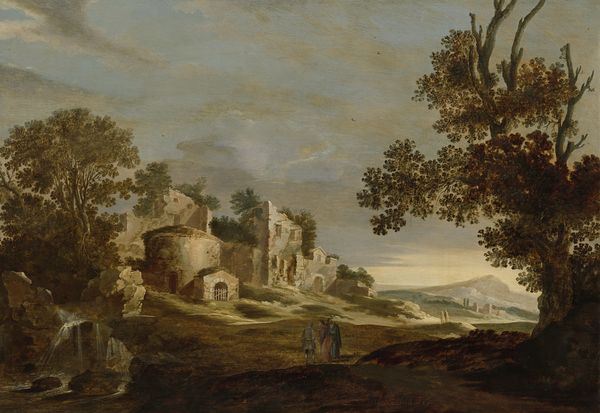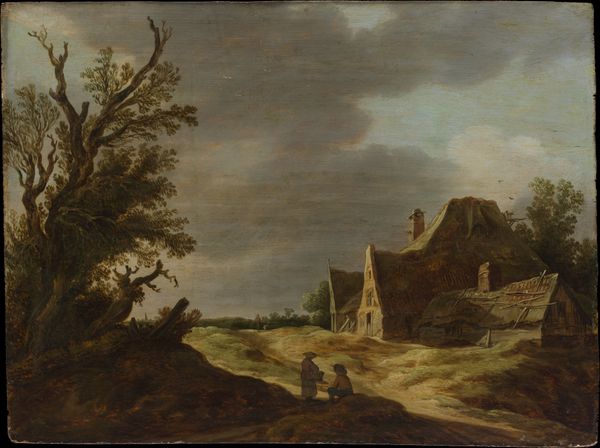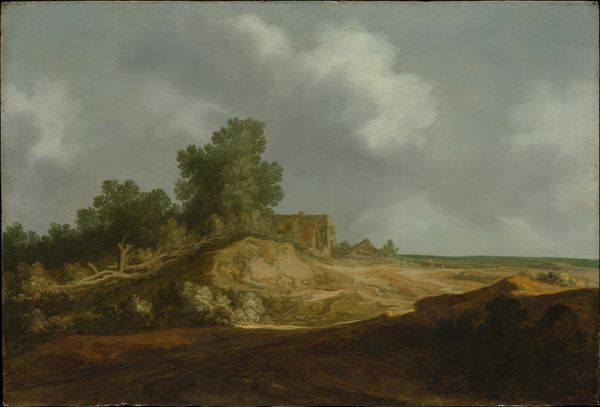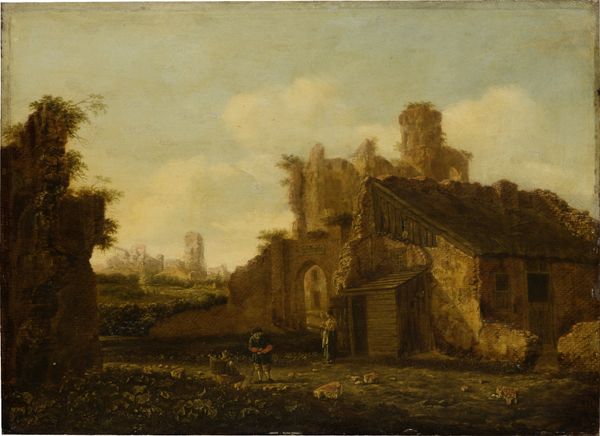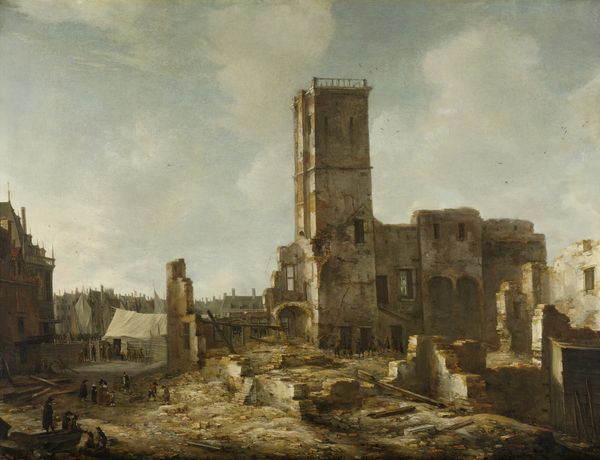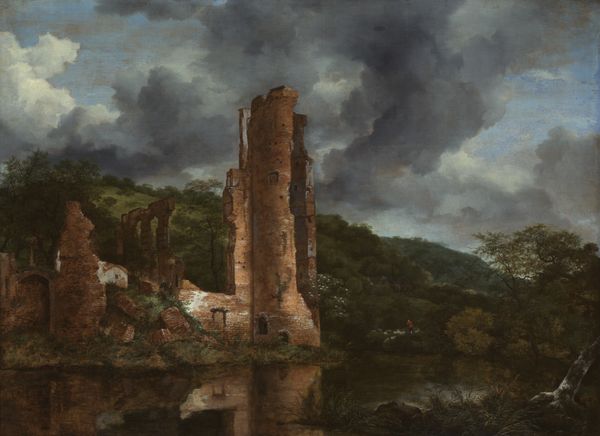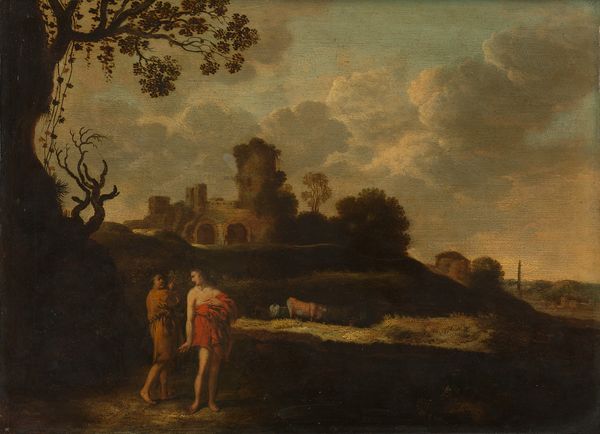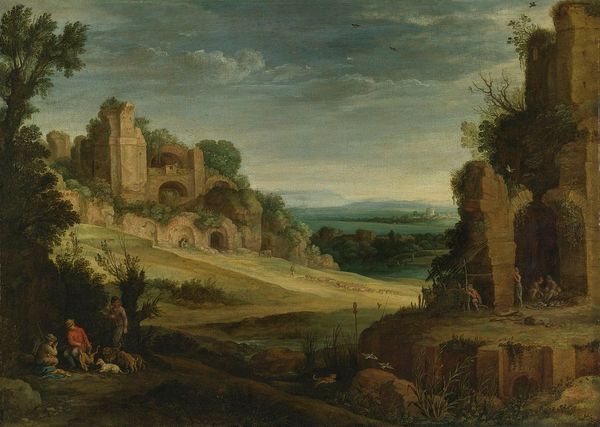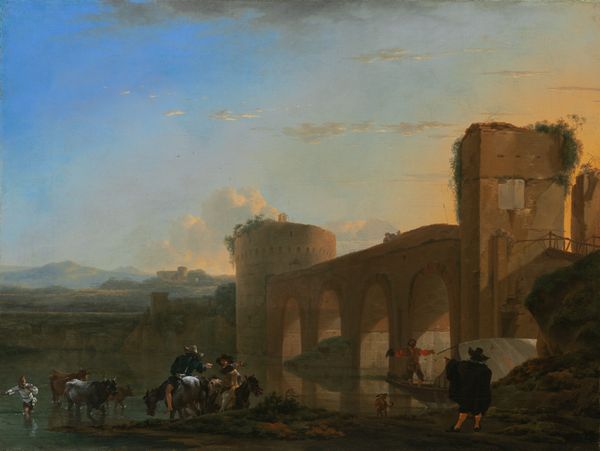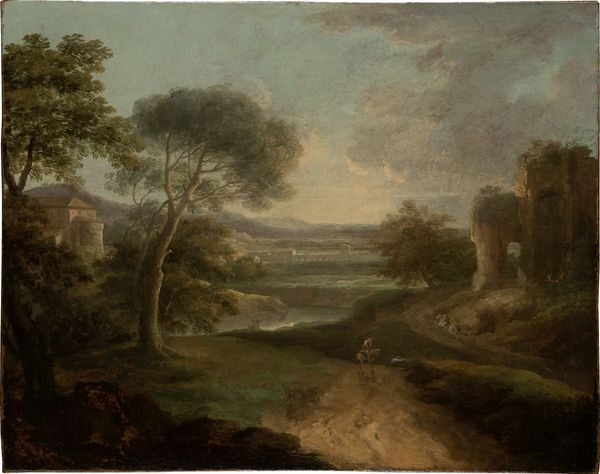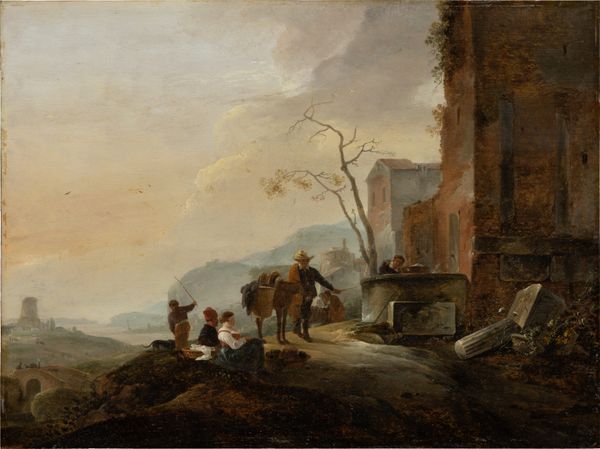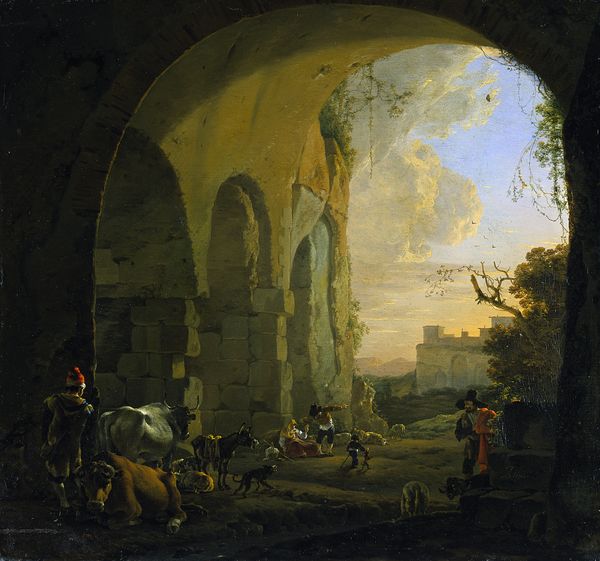
painting, oil-paint
#
baroque
#
painting
#
oil-paint
#
landscape
#
classical-realism
#
oil painting
#
vanitas
#
cityscape
#
picturesque
#
history-painting
#
realism
Dimensions: 35.5 cm (height) x 53.5 cm (width) (Netto)
Editor: This is a 17th-century oil painting, "Landskab med ruiner," currently housed at the SMK. I’m struck by the contrast between the ruined structures and the distant cityscape. It feels like a statement about the fragility of power. What do you see in this piece? Curator: Absolutely. I see a deliberate engagement with themes of power, decay, and the cyclical nature of history. Notice how the picturesque ruins are not just aesthetic objects; they act as a stage for reflecting on societal shifts. How does the crumbling architecture resonate with broader sociopolitical issues of the 17th century for you? Editor: Well, I think about how empires rise and fall, and the artwork feels like a commentary on that inevitable decline. The ruin suggests loss, but there's still beauty in the landscape. Curator: Precisely. This tension between destruction and beauty invites us to consider whose stories are being told and whose are being erased. Are these ruins romanticized, or do they represent the suffering and displacement that often accompany the collapse of civilizations? Editor: That's a really important point. I hadn't considered the human cost as directly, but now I’m wondering about the people who lived in that city in the background. Curator: The choice to depict ruins instead of thriving structures might be read as a form of social commentary. The Baroque often uses these images to speak to ideas about temporality, "vanitas" themes that ask the viewer to consider the value of earthly endeavor. What statement is the artist making through the image? Editor: It’s definitely given me a new perspective. It’s not just a pretty landscape, but a critical reflection on history and power. I appreciate how you brought in the sociopolitical elements to unpack it. Curator: And I'm invigorated by your insight! Looking at art as a mirror reflecting historical inequalities compels us to think about how these power dynamics continue to shape our present.
Comments
No comments
Be the first to comment and join the conversation on the ultimate creative platform.
